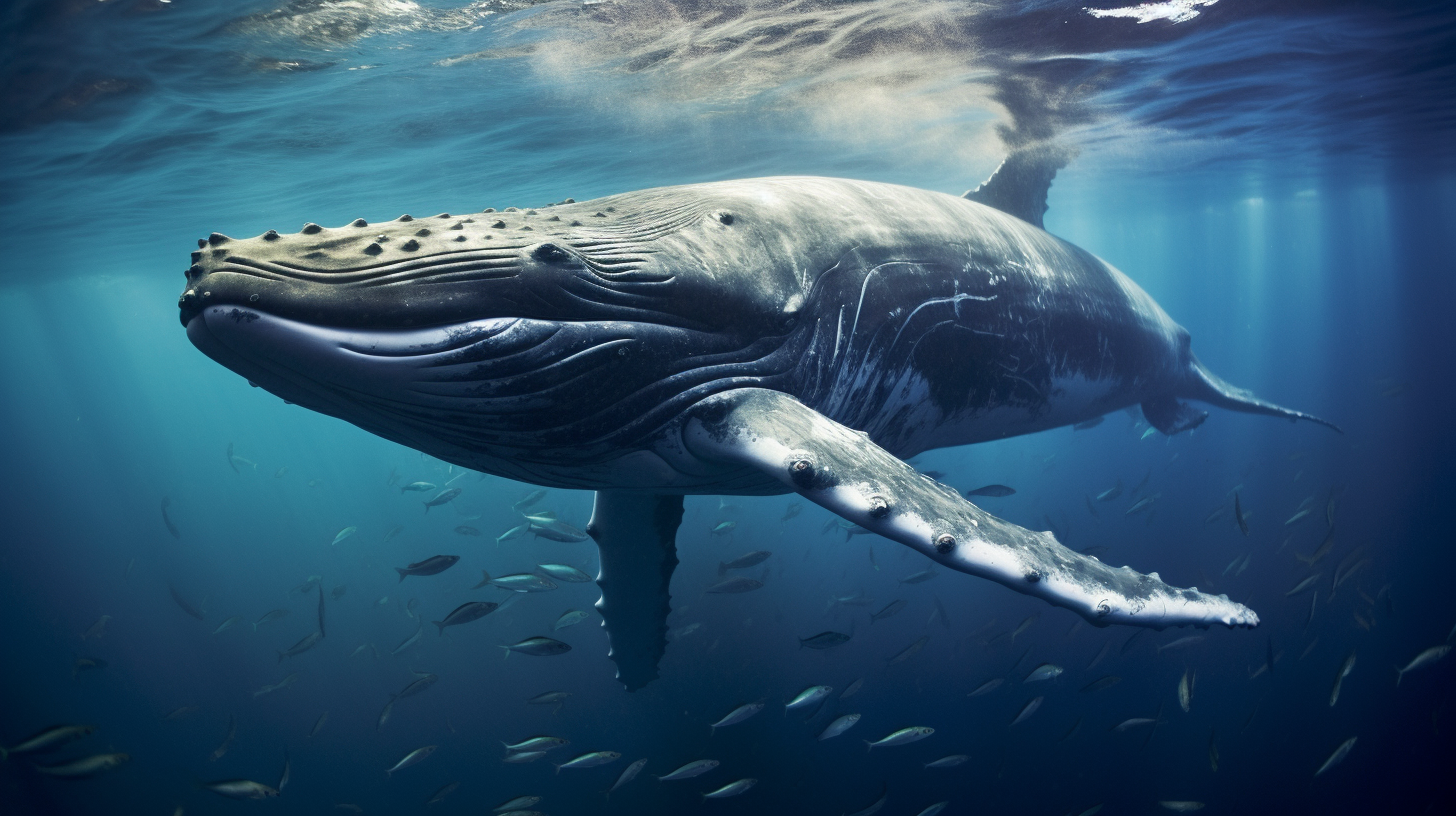In a world where silence pervades the deep blue like a thick fog, the Giants of the Deep face an odyssey of survival. The majestic whales, once the tenors and sopranos of oceanic symphonies, now tread through eerie stillness. The question that echoes through the aquatic emptiness: Can whales navigate the silent oceans?
Our seas have transformed into vast deserts of quietude, the product of a world that stood still when the cacophony of human invention suddenly ceased. The Quiet Apocalypse, as we’ve come to remember it, was not marked by a bang, but the hush of a species’ drawn-out exhalation. The era of ambient noise is over; the consoling hum of ship engines and the staccato of sonar pings have vanished, leaving a gap in the world that whales once used as their acoustic guideposts.
Whales’ navigational prowess is legendary, as they traverse thousands of miles, from frigid polar realms to warm breeding lagoons. Their echolocation—sonar melodies bouncing off the contours of the deep—dictated their ancient migration paths. But now, confounded by silence, their songs have turned from anthems of travel to dirges of bewilderment.
Experts suggest that, despite the vacuous quiet, whales may be adapting. With reduced noise pollution, their vocalizations can travel farther, potentially allowing for long-distance communication previously impossible. Some argue that this unexpected hush might serve as a sabbatical for their senses, hitherto bombarded by a cacophony of anthropogenic noise. Yet, the cessation of sound is symptomatic of a direr issue—the ravages of climate change are an ever-present specter.
Environmental disruption has wrought havoc upon whale migration, breeding, and feeding patterns. With ice sheets dissolving into memory and once-bountiful feeding grounds reduced to oceanic wastelands, a question looms: Are our silent oceans a twisted reprieve for these leviathans, or one more nail in their coffin?
Sadly, this conundrum coincides with the plight of other marine denizens. Ocean’s Orphans, the previous narrative piece, brought forth the heart-wrenching story of marine life becoming refugees in their own liquid home—whales, dolphins, and hawksbill turtles cast adrift in a world no longer their own.
It’s a paradox—an enigma shrouded in the ghostly veil of a once vibrant biosphere. Silence might be golden on land, but underwater, it’s a hue of deep cobalt blue—a color of mystery, depth, and perhaps, sorrow. In this kingdom of mute giants and stilled waves, do whales chart a future course, or do they merely wander
The Giants of the Deep navigate not just currents and temperatures, but a Gaia sculpted by human neglect and environmental disregard—a world where their magnificence is juxtaposed with existential doubt. Each breach, each song, each ripple in the water stands testament to the resilience of these behemoths—a testament that will, against all odds, endure or quieten into the annals of a once-lush planet.
One might ponder whether the whales’ eventual adaptation to this silence is a beacon of hope, a testament to the indomitable spirit of nature’s children. Yet, one must remember the creed of our chronicles—the dystopian world we enshrine spells no tale of redemption. The silent serenade that whales perform may be the final narrative of a species dazzling in its swansong—a reminder of what was and what may never be again.
As the twilight of the whales’ odyssey beckons, we are left to wonder if nature’s grandest creatures can navigate not only the silent waters but the cacophony of challenges laid bare by a changing world. With this, the stage is set, not for the next chapter, but perhaps the final act of the Giants of the Deep.
